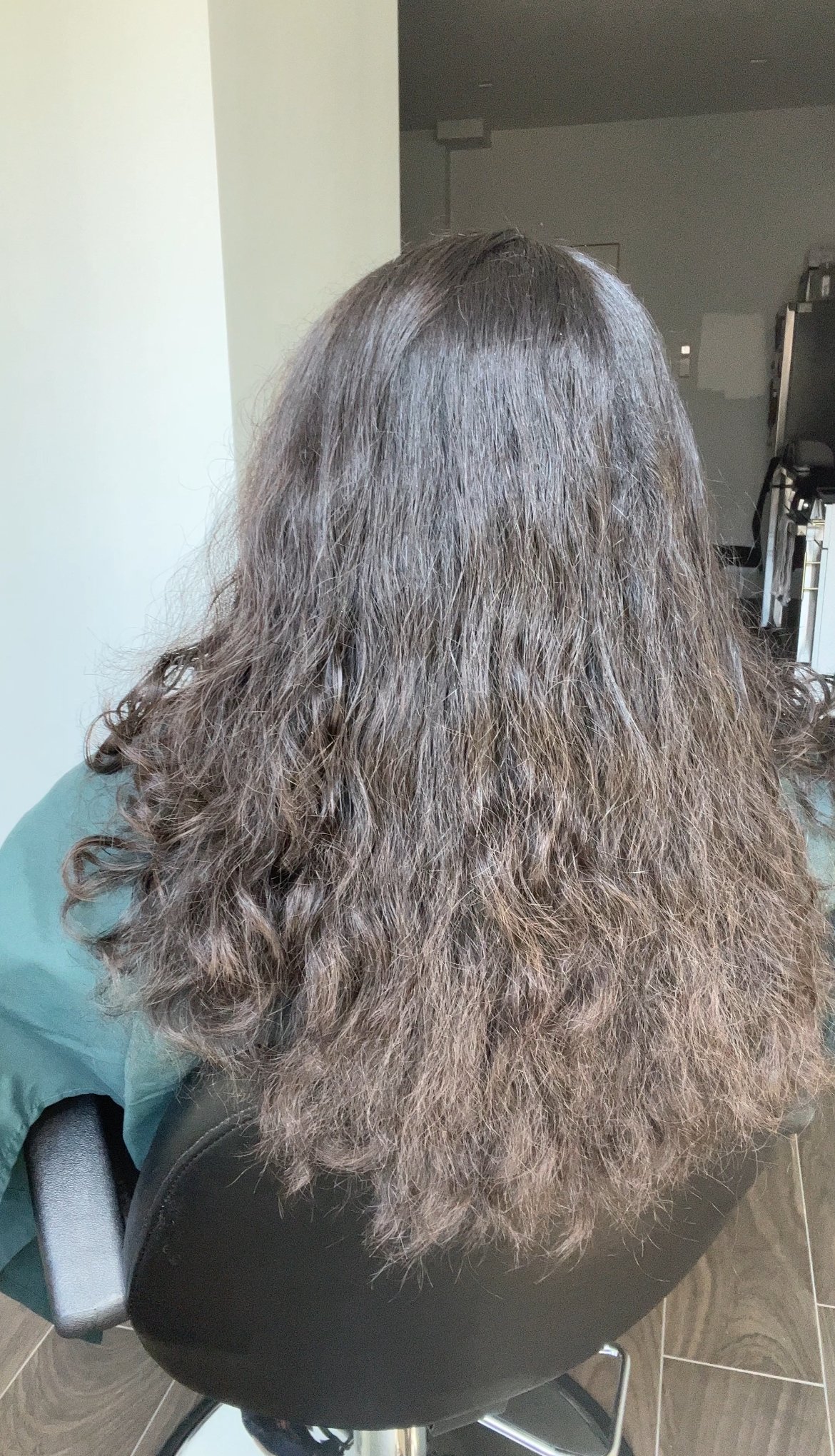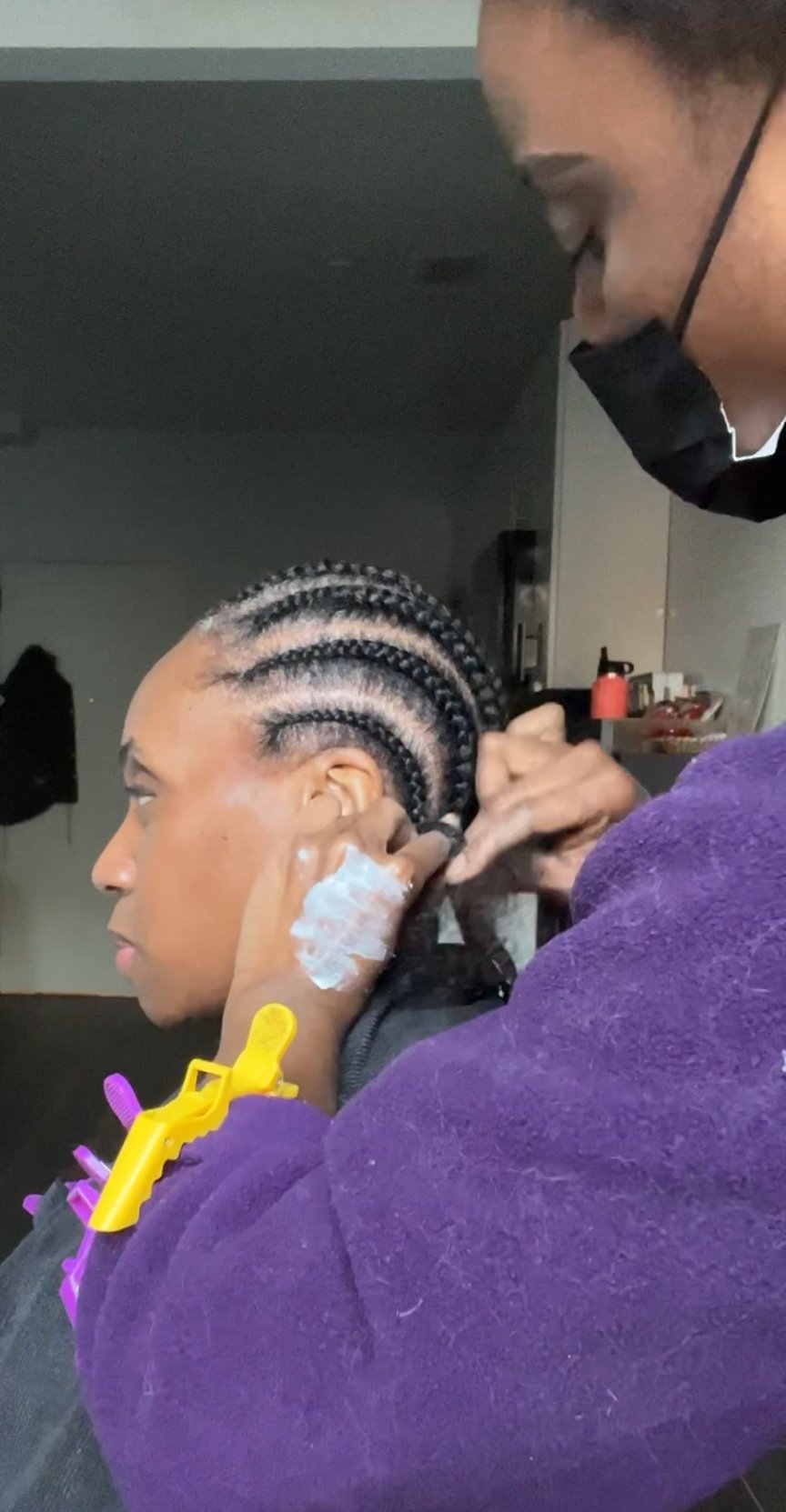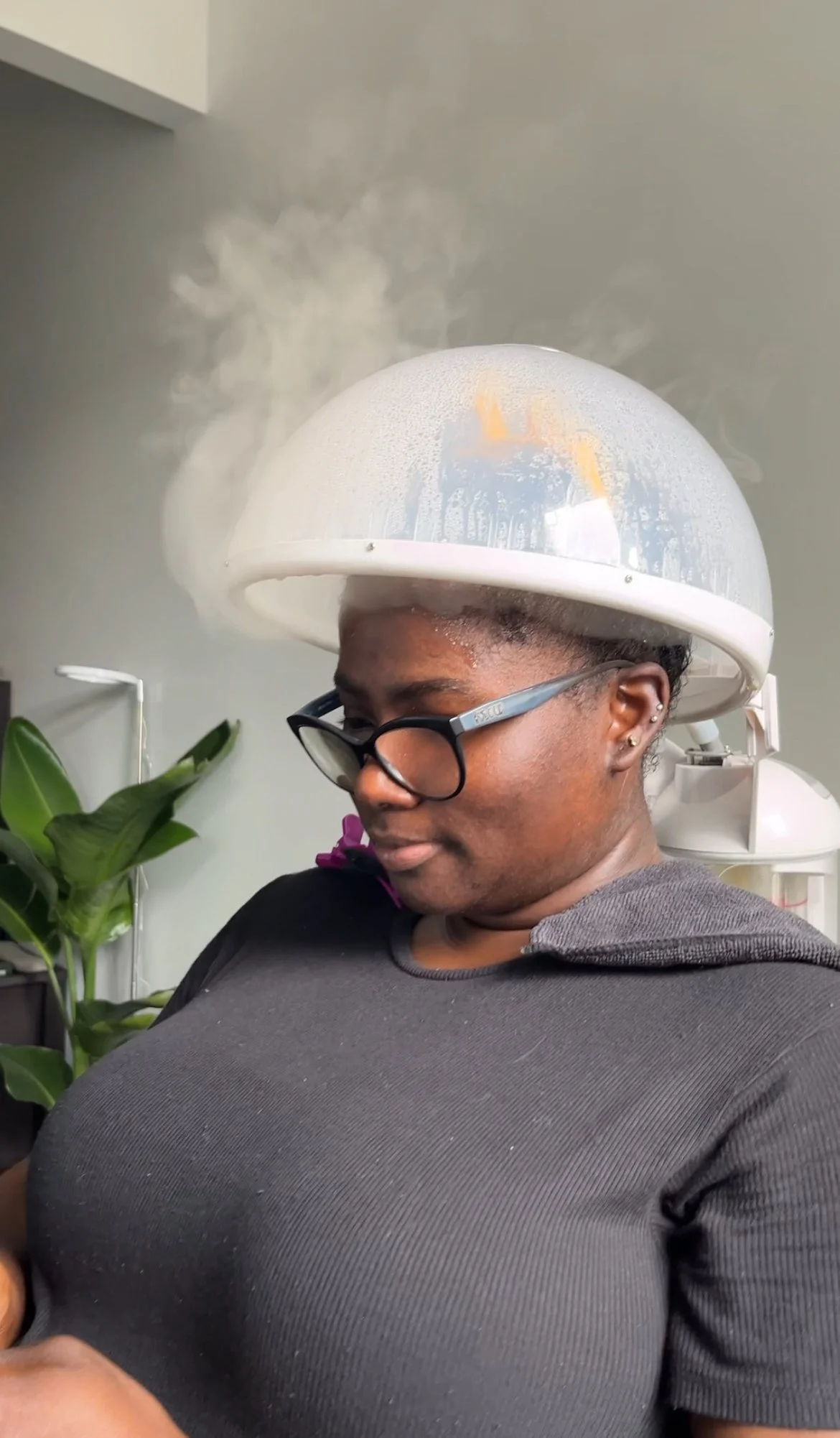Can You Wash Your Hair Too Much?
Navigating Hygral Fatigue: Strategies for Preserving Curly Hair Health
*This post contains affiliate links*
How often do you wash your hair?
Are you a gym rat or wash n’ go queen that constantly needs to wet their hair? If so, you could be a victim of hygral fatigue!
Hygral fatigue can be a major concern for individuals with curly hair.
When you douse your hair in water multiple times a week, the constant swelling and unswelling of the hair strands can lead to damage and breakage. This results in dull, frizzy, and brittle curls.
It is so important for those of us with curly hair to understand how to navigate hygral fatigue in order to maintain healthy and vibrant curls.
In this guide, we will discuss the causes and symptoms of hygral fatigue, as well as strategies for preventing and managing its effects.
By implementing these tips and techniques into your hair care routine, you can preserve the health and beauty of your curly hair while avoiding the negative impacts of hygral fatigue.
What is Hygral Fatigue?
Hygral fatigue, also known as water or moisture fatigue, is a condition that can occur in curly hair when it undergoes repeated cycles of swelling and unswelling due to exposure to excessive moisture.
Every time you wet your hair, the outer layer of the hair, known as the cuticle, reacts to water and opens up. As your hair dries the cuticles lay back down and close.
This constant expansion and contraction puts stress on the hair strands, which can lead to damage over time.
The cuticle is responsible for regulating the amount of moisture that enters and leaves the hair shaft. When this layer becomes compromised, either due to genetics, chemical treatments, or excessive heat styling, it can allow too much moisture to penetrate the inner cortex of the hair.
This constant swelling of the hair shaft causes damage to its structure, resulting in symptoms such as frizz, breakage, and loss of curl definition. In severe cases, it can also lead to split ends and hair thinning.
Be aware, the frequency and intensity of hygral fatigue can vary depending on individual hair type and routine. Those with naturally porous or damaged hair may experience more severe effects of hygral fatigue, while individuals who frequently use heat styling tools or undergo chemical treatments may also be at a higher risk.
How Does Hygral Fatigue Affect Curly Hair?
Hygral fatigue can have a significant impact on the overall health and appearance of curly hair. As mentioned, the constant swelling and unswelling of the hair strands can lead to damage and breakage, resulting in frizzy, dull, and brittle curls.
In addition to these visible effects, hygral fatigue can also cause changes in the porosity of the hair. This means that the hair may become more prone to absorbing and losing moisture, leading to a vicious cycle of swelling and unswelling.
If you feel like no matter how much you wet your hair, it dries out quickly, you may have signs of hygral fatigue.
Furthermore, hygral fatigue can also affect the elasticity of the hair, making it less able to bounce back from stretching or styling. This can result in loss of curl definition and overall lackluster appearance.
Also, as mentioned before, hygral fatigue can compound the effects of other hair damaging practices such as heat styling and chemical treatments. This means that people who already have damaged or weak hair may be more susceptible to severe hygral fatigue.
It is important to note that not all moisture exposure is bad for curly hair. In fact, proper hydration is essential for maintaining healthy and defined curls. However, it is all about balance and understanding how to properly care for your hair to prevent excessive swelling and unswelling.
Does Hair Type Play a Role in Hygral Fatigue?
Hair type does indeed play a role in the severity and susceptibility to hygral fatigue. Those with naturally curly or highly textured hair are more prone to experiencing hygral fatigue due to their hair's unique structure and porosity.
Curly and kinky hair tends to have a higher level of porosity, meaning that it can absorb and lose moisture more quickly than straight hair. This makes it more susceptible to the constant swelling and unswelling that occurs with hygral fatigue.
Furthermore, individuals with damaged or chemically treated hair may also experience more severe effects of hygral fatigue. Chemical treatments such as dyeing or bleaching can weaken the hair structure, making it more prone to breakage and damage from excessive moisture exposure.
However, this does not mean that those with straight hair are immune to hygral fatigue. In fact, even fine straight hair can experience some level of water fatigue if over-moisturized or exposed to excessive humidity.
It is important for individuals of all hair types to understand their hair's unique needs and adjust their hair care routine accordingly to prevent or manage hygral fatigue. This may involve using different products, adjusting styling techniques, or incorporating protective styles into the routine. Ultimately, proper hair care is key to preventing and managing hygral fatigue for all hair types.
Can Hygral Fatigue be Reversed?
While hygral fatigue cannot be reversed, its effects can certainly be managed and minimized. If you are starting to notice symptoms of hygral fatigue, it is important to take immediate action to prevent further damage.
Firstly, assess your hair care routine and make sure you are not over-moisturizing or using products that contain heavy oils or butters that can contribute to excessive swelling. Instead, opt for lightweight, water-based products that will provide hydration without weighing down your hair.
You can also incorporate deep conditioning treatments into your routine to strengthen and repair any damage caused by hygral fatigue. The Deep Repair Treatment uses keratin protein to help to fortify the hair strands and improve elasticity.
Additionally, incorporating low manipulation and protective styles such as braids or twists can also help reduce the frequency of moisture exposure and give your hair a break from manipulation.
In more severe cases, booking a trim may be necessary to get rid of any split ends and prevent further damage. It is important to regularly trim your hair even when not experiencing hygral fatigue in order to maintain healthy ends.
How to fix Hygral Fatigue
(which Hair tools and hair products to use)
There are a few key strategies to help fix and prevent hygral fatigue.
Firstly, it is important to use the right hair tools and products in your routine. Invest in a good quality microfiber towel or t-shirt to gently squeeze excess water from your hair instead of rubbing it aggressively with a regular towel.
Avoid using heat styling tools regularly, as they can further damage already weakened hair strands. Instead, embrace your natural curls and opt for air drying or diffusing on a low heat setting.
When it comes to products, look for those specifically designed for curly hair that will provide hydration without weighing down your strands. Avoid sulfates and alcohols, as they can strip the hair of its natural oils and contribute to dryness.
Also, incorporating a leave-in conditioner, like the Emergency Miracle Treatment can help to seal in moisture and protect the hair from the elements. Deep conditioning treatments should also be done regularly to nourish and strengthen the hair.
In addition, incorporating protective styles into your routine can give your hair a break from excessive manipulation and moisture exposure. Just remember not to keep these styles in for too long, as it can also lead to hygral fatigue.
Click here if you’re in need for a healthy protective style regimen.
Fixing and preventing hygral fatigue requires a gentle and balanced approach to hair care that prioritizes hydration and protection. By incorporating these strategies into your routine, you can achieve healthy, defined curls without the damaging effects of water or moisture fatigue.
Risk of untreated hygral fatigue
Untreated hygral fatigue can lead to a variety of negative effects on the hair, making it important to address and manage this condition. One risk is the weakening and breakage of hair strands, as excessive swelling and unswelling can cause the hair to become brittle and more prone to damage.
Additionally, untreated hygral fatigue can also result in frizz and loss of curl definition. This is because the constant expansion and contraction of the hair cuticle can cause it to become rough and uneven, resulting in a lack of smoothness and defined curls.
Furthermore, hygral fatigue can also contribute to dryness and excessive shedding, as the hair's natural oils are disrupted by the constant moisture exposure. This can lead to an unhealthy scalp and hair follicles, potentially hindering hair growth.
In some cases, untreated hygral fatigue can also cause permanent damage to the hair, resulting in changes in its natural texture and appearance. This can be particularly concerning for individuals with highly textured or curly hair, as it may alter their unique curl pattern.
Mistakes to avoid when dealing with hygral fatigue
When dealing with hygral fatigue, there are some common mistakes that should be avoided. Here are some of the key ones to keep in mind:
Over-moisturizing: While moisture is important for healthy hair, too much of it can lead to hygral fatigue. Avoid using heavy oils and butters on a regular basis and opt for lighter, water-based products instead.
Using heat styling tools: Heat can further damage already weakened hair strands, so it is best to limit the use of heat styling tools. If you do use them, make sure to use a heat protectant and keep the temperature low.
Skipping deep conditioning treatments: Deep conditioning treatments are crucial for repairing and strengthening hair affected by hygral fatigue. Skipping these treatments can hinder the healing process and prolong the effects of water fatigue.
Not trimming regularly: Trimming your hair regularly is important for maintaining healthy ends and preventing further damage. Neglecting to do so can lead to split ends, which can contribute to hygral fatigue.
Not incorporating protective styles: While over-manipulation and moisture exposure can cause hygral fatigue, the opposite extreme of neglecting the hair can also damage it. Incorporating protective styles can give your hair a break while still maintaining its health. Just remember not to keep them in for too long.
By avoiding these common mistakes and following a gentle and balanced hair care routine, you can effectively manage and prevent hygral fatigue, ensuring healthy and beautiful curls.
How to prevent hygral fatigue in the future
Prevention is key when it comes to managing hygral fatigue and maintaining healthy hair. Here are some tips for preventing hygral fatigue in the future:
Limit exposure to water: While water is essential for hydrating the hair, too much of it can cause damage. Try to limit the frequency of washing. I always recommend washing once a week to my clients.
Protect hair while swimming: Chlorine and saltwater can strip the hair of its natural oils and contribute to hygral fatigue. Before going for a swim, coat your hair with a leave-in conditioner or oil to create a barrier against these harsh elements.
Use protective styles: As mentioned earlier, incorporating protective styles into your routine can give your hair a break from excessive manipulation and moisture exposure. Make sure to not keep these styles in for too long to avoid any potential damage.
Choose the right products: Use hair products specifically designed for curly hair that will provide hydration without weighing down your strands. Avoid sulfates and alcohols, as they can strip the hair of its natural oils and contribute to dryness.
Deep condition regularly: Deep conditioning treatments are crucial for nourishing and strengthening the hair. Make sure to incorporate them into your routine at least once a week or as needed, depending on your hair's needs.
By following these tips and maintaining a balanced approach to hair care, you can effectively prevent and manage hygral fatigue, ensuring healthy and beautiful curls for the future.
FAQs
Does hygral fatigue affect all hair types?
Hygral fatigue can affect all hair types, but it is more common in highly textured and curly hair due to its natural tendency to absorb and retain moisture.
Can hygral fatigue be reversed?
Yes, with proper care and management, hygral fatigue can be reversed. However, it is important to note that some damage may be permanent, such as changes in natural hair texture and curl pattern.
Are there any special considerations for children with curly hair?
Children with curly hair are also susceptible to hygral fatigue and can benefit from a gentle and balanced hair care routine. It is important to choose age-appropriate products and avoid over-manipulation of their delicate strands. Deep conditioning treatments can also help maintain the health and strength of their hair.
Conclusion
In conclusion, hygral fatigue is a common yet often overlooked issue in hair care. It is important to understand the causes and effects of this condition in order to effectively prevent and manage it. By avoiding common mistakes and following a balanced approach to hair care, you can ensure healthy and beautiful curls for yourself and your loved ones.
Remember to listen to your hair's needs and make adjustments accordingly. With the right care and attention, you can maintain strong, moisturized, and beautiful curls for years to come. So keep these tips in mind and embrace your natural hair with confidence! Happy styling!










